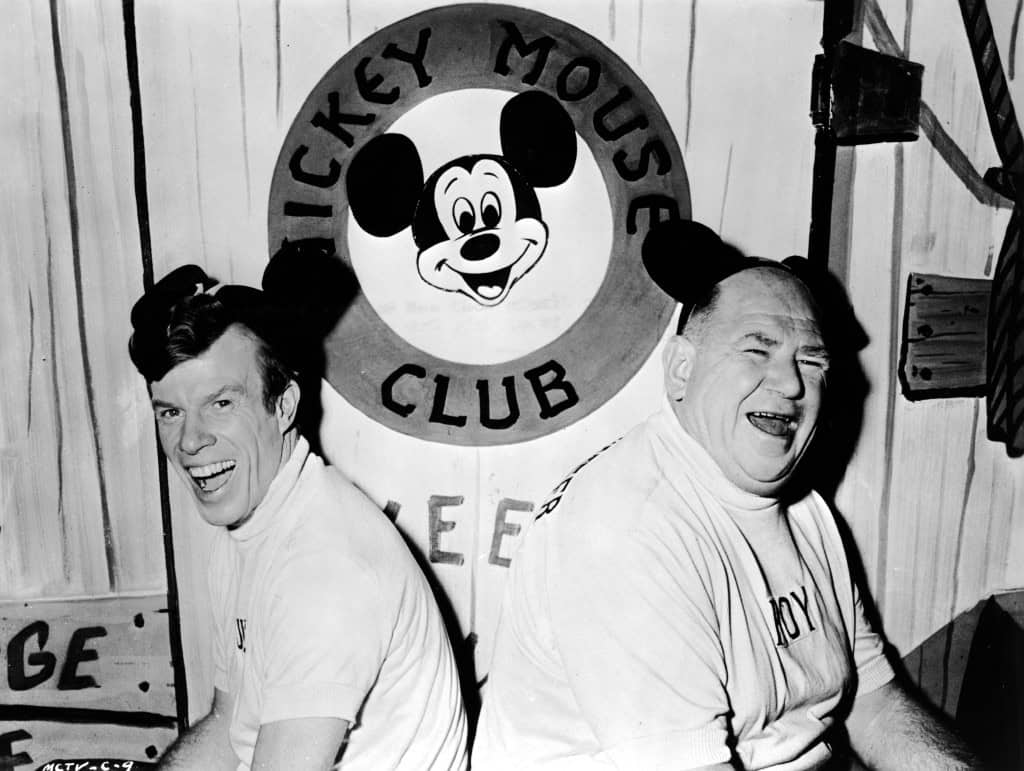By David Cohea, ReMIND Magazine
For Walt Disney, the advent of television and the opening of his first theme park were very good things for the company, building upon a substantial film franchise.
The 1950s started out with the release of the full-length animated feature Cinderella. It was the first attempt since the early ’40s flops Pinocchio (1940) and Bambi (1942). (Those animated features had been hurt by World War II and the loss of the European market, but they would do much better in later theatrical and video release.)
The tale — of a beautiful young woman trapped in her evil stepmother’s chateau and rescued by a fairy godmother who could turn pumpkins into carriages and a prince’s love into the hope of a glass slipper — premiered in Boston on Feb. 15, 1950. Disney was on the verge of bankruptcy and needed a win; Cinderella was a knockout. Critics hailed it as a masterpiece, and it was box office magic as well. The fifth highest-grossing film in the U.S. that year, Cinderella would be released in theaters five more times in the years to come.
Other animated movies of the ’50s included Alice in Wonderland (1951) and Peter Pan (1953). Wonderland has become a sort of cult classic, and it was nominated for an Academy Award for film scoring. (It was beat out that year by An American in Paris.)
Disney’s first all-live-action film was Treasure Island (1950), an adaptation of Robert Louis Stevenson’s 1883 novel. Critics called it a first-rate adventure guaranteed to thrill young and old alike. It would be followed by other live-action thrillers The Story of Robin Hood and His Merrie Men (1952) and 20,000 Leagues Under the Sea (1954), starring Kirk Douglas and James Mason. The Jules Verne adaptation would be nominated for three Academy Awards and win two, for art direction and special effects.
Ending his distribution contract with the failing RKO Pictures in 1953, Walt Disney formed his own distribution company, Buena Vista Films, giving him complete control over his movie and television projects.
In 1954, the ABC network launched Disney’s first regular series, Walt Disney’s Disneyland, which Walt used to promote his new theme park in Anaheim, California. On July 17, 1955, Disneyland officially opened, accompanied by a live TV broadcast hosted by Robert Cummings, Art Linkletter and Ronald Reagan. Episodes of Walt Disney’s Disneyland would continue to feature the park with its main attractions Adventureland, Tomorrowland, Fantasyland and Frontierland. By year’s end, 1.2 million visitors had been to Disneyland.
Disney kept developing a faithful TV audience with the weekday afternoon show The Mickey Mouse Club with its faithful cadre of young Mouseketeers. Who can forget Bobby and Lonnie and Darlene and Annette? Also successful on TV was Disney’s Davy Crockett miniseries, starring Fess Parker, and Zorro, starring Guy Williams, which ran for two seasons. (Williams would return as Dr. John Robinson in CBS’ Lost in Space.)
In 1958 Walt Disney’s Disneyland was retitled Walt Disney Presents and eventually moved to Sunday nights on ABC, where it would stay for 21 years. Some episodes were mixed live-action and animation, with figures like Mickey Mouse, Donald Duck, Professor Owl and Jiminy Cricket interacting with Walt.
Disney’s film studios stayed busy through the end of the decade, releasing the animated features Lady and the Tramp (1955) and Sleeping Beauty (1959); for live-action, there was Johnny Tremain (1957) and The Shaggy Dog (1959).

